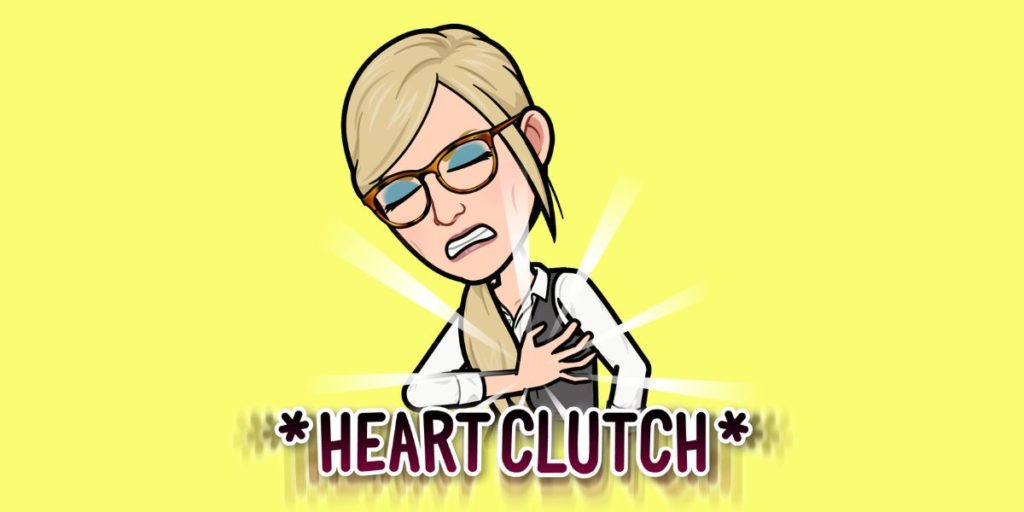BOOK REVIEW: Run Towards The Danger
by Sarah Polley
Let me start this rave review by stating that I’m far from unbiased as a book reviewer.
I don’t pick up books that don’t interest me. I don’t finish books I don’t like. I don’t write about books I wouldn’t recommend to a friend. So if I pen a book review, it’s automatically a four- or five-star treatment. And this one is no different.
But there’s more to this review than my usual enthusiasm for a well-told tale. I’ll admit I’m a Sarah Polley super fan. Ever since the late ’80s, when she starred in the TV series based on Beverly Cleary’s books about Ramona Quimby, then later as Sara Stanley in the iconic Canadian drama Road to Avonlea, I’ve followed her work. I adored her as Alice in the Alice Through The Looking Glass on stage at Stratford. I admired her screen treatment of Margaret Atwood’s novel, Alias Grace. And I was blown away by her autobiographical documentary, Stories We Tell.
It’s bingeable as an audio book
So when Polley’s book of essays, Run Towards The Danger was published last spring, I was basically Customer Zero. I was waiting for it to drop. And when it finally came out, I binged the entire audio book in one weekend.👂

It hit me right in the heart, and I felt like crying the entire weekend. Somehow, even though my expectations were unreasonably high at the outset, Polley managed to exceed them. She’s so vulnerable, so unflinchingly honest, so thoughtful. And she’s had so many truly extraordinary experiences. It’s everything I look for in a memoir.
And her voice! 🫦
In Sarah’s self-voiced audio book, you can sense the complexity of her relationship with acting, the pain of losing her mother, the love she received from her first boyfriend, the relief of finally recovering from a traumatic brain injury. The emotions are all right there, in the sound of her voice.
Polley’s essays, every single one of them, spoke straight into my body. She has a skill for writing from the senses, for describing her experiences on visceral level. I admire that.
Trauma is the theme that bubbles up
And the theme of these essays is highly relatable. Polley is not just talking about the performance anxiety she felt as a child. She’s talking about anxiety. How rampant it is, how it affects one’s body, mind, choices, capabilities and relationships.🤱 We have to help ourselves so we can help our children.
Polley’s talking about how every single one of us is detached from our physical selves because of traumatic experiences we’ve had as a matter of course in our society. And how the distinctly intimate personal traumas we suffer as children are then overlaid with collective experiences. COVID, for example, and racisms, global inequality, the news, the non-news. All of it becomes a hard shell, and we retreat inside, unwilling to reveal our true selves to the world.
Polley has had an extraordinary life, in some ways. But in this book, she manages to examine those experiences through the eyes of an ordinary person. I think that takes a lot of skill. To write about one’s humanness, one’s flaws and foibles in a culture that expects perfection from women, is a victory. You can’t hire a ghostwriter to do that.
Not a glossy version
Polley doesn’t try to sell us a glossed up version of herself in this memoir. Instead of going out onto a stage and performing an act, she invites us into her change room. Sarah lets us see her before the curtain rises. No costume, no painted on face, no predetermined expressions. And in fact, nothing has been rehearsed for this show called real life.
By revealing the particular forms of suffering she experienced behind the scenes during her life in the spotlight, Polley reveals that she’s more than a face, more than a name or a famous family. With this book, she transcends celebrity. She’s a soul having a physical experience, just like the rest of us here on earth.

Titular essay drives home the broader point
The culminating essay in Run Towards The Danger tells of Sarah’s struggle with post-concussion syndrome. Of all the essays, this one touched me in the deepest places.
She describes how, after 31/2 years of suffering, and thanks to treatment from Dr. Michael Collins at the University of Pittsburgh Medical Center, she finally started feeling better. And how, by taking seriously his prescription to run towards the danger rather than away from it, her entire life was changed.
A bump on the head changed everything
The story meant a lot to me because my husband Terry has also suffered from post-concussion syndrome. In his case, it went on for about five years. And it was thanks to the same doctor Sarah writes about, Dr. Collins in Pittsburgh, that he finally started feeling better, too.
Her words approximately described my husband’s experience to me in concrete terms, as he later confirmed. Sarah wrote of how impossible it felt to function as a parent with post-concussion symtoms, as well as how frustrating it was to try to work during her concussion period. She could no longer perform her key roles in life, and it was a blow to her identity.
I’d watched my husband struggle with the same apparently simple things, in the same detached way, at the same cost to his identity. To remember the early days of his big bump on the head sent chills through me. Still does.
Concussion syndrome not widely understood
Because post-concussion syndrome is pretty much invisible, it was very difficult to understand, as his partner. I couldn’t see what he was going through on his face or in his body. He was left trying to describe in words what he was feeling, but he couldn’t seem to do that very well.
Miracle of miracles, after he went to Pittsburgh a few times, Terry did start to feel better in 2020. But even after he’d started saying he felt better, I was confused. He looked exactly the same. And recovery of his social self was dampened by COVID. For him, isolation was just more of the same house-bound state he’d been in for five years.
Polley’s final essay allowed a glimpse of what it must have been like on the inside for my husband. His struggles now seem more real to me. He wasn’t faking. He wasn’t whining. He was suffering. But he couldn’t describe it very well because his brain wasn’t working.
Her essay also gives me hope that there might be a positive lesson learned from Terry’s long struggle. We are still trying to make sense of it, but there’s a little more optimism there now.
2% of Canadians have concussion symptoms
All the essays in this book are stunningly well told and worth reading, but I think the essay about concussion is particularly relevant for business leaders. People should understand this invisible injury. Concussion is remarkably common, with about two percent Canadians suffering from the effects of a traumatic brain injury today.
Some (lucky?) people recover from a bad bump on the head within a few weeks, but others take a long time to recover. Like, years. Returning to work can be a matter of two steps forward, three steps back. Understanding is essential. And compassion is required.
That’s why I hope you will read this book. Just as Polley seeks to find meaning in her difficult experiences, so can we as a culture learn from her stories. We could, for a moment, entertain the idea that traumatic brain injuries are a useful metaphor for trauma.

Are we living in a traumatized society?
In 2021, it’s safe to assume that everyone you relate has experienced some form of trauma. They’ve had to adapt to survive, and they’ve some coping strategies that might not make sense to you.
We could collectively take this book to heart and learn from Polley’s story by paying more attention to how trauma affects people and groups at work.
Maybe trauma informed leadership could become a new minimum standard. Maybe workers would be up for reducing noise pollution in our workplaces. Maybe we’d remove TVs from lunch rooms, break rooms, and restaurants in general. Maybe vehicle fleets would be fully electric. And maybe nap rooms would finally become a thing.
Maybe.
Like this book review? Read more reviews on my blog.

Published by